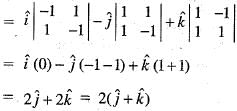Mathematics Exam > Mathematics Tests > Vector Calculus - 7 - Mathematics MCQ
Vector Calculus - 7 - Mathematics MCQ
Test Description
20 Questions MCQ Test - Vector Calculus - 7
Vector Calculus - 7 for Mathematics 2025 is part of Mathematics preparation. The Vector Calculus - 7 questions and answers have been prepared
according to the Mathematics exam syllabus.The Vector Calculus - 7 MCQs are made for Mathematics 2025 Exam.
Find important definitions, questions, notes, meanings, examples, exercises, MCQs and online tests for Vector Calculus - 7 below.
Solutions of Vector Calculus - 7 questions in English are available as part of our course for Mathematics & Vector Calculus - 7 solutions in
Hindi for Mathematics course.
Download more important topics, notes, lectures and mock test series for Mathematics Exam by signing up for free. Attempt Vector Calculus - 7 | 20 questions in 60 minutes | Mock test for Mathematics preparation | Free important questions MCQ to study for Mathematics Exam | Download free PDF with solutions
Vector Calculus - 7 - Question 3
Maximum value of directional derivative of f= x2yz at the point (1, 4,1) is
Vector Calculus - 7 - Question 5
If C is a smooth curve in R3 from (–1, 0, 1) to (1, 1, –1), then the value of is
Detailed Solution for Vector Calculus - 7 - Question 5
Detailed Solution for Vector Calculus - 7 - Question 8
Vector Calculus - 7 - Question 9
The relation between the line integral and the surface integral is
Vector Calculus - 7 - Question 11
If Φ(x, y, z) = 3x2y - y3z2 then the value of grad Φ at the point (1,- 2 ,- 1 ) is
Vector Calculus - 7 - Question 12
If Φ is a differentiable scalar point function, then the value of curl grad Φ is
Vector Calculus - 7 - Question 14
A particle moves along the curve  Acceleration of the particle in the direction of the motion is
Acceleration of the particle in the direction of the motion is
Vector Calculus - 7 - Question 15
Using stokes' theorem evaluate the line integral, where L is the intersection of x2 + y2 + z2 = 1 and x + y = 0 traversed in the clockwise direction when viewed from the point (1, 1, 0)
Detailed Solution for Vector Calculus - 7 - Question 15
Detailed Solution for Vector Calculus - 7 - Question 16
Vector Calculus - 7 - Question 17
Let is a solution of the Laplace equation then the vector field
is
Detailed Solution for Vector Calculus - 7 - Question 17
Detailed Solution for Vector Calculus - 7 - Question 18
Detailed Solution for Vector Calculus - 7 - Question 19
Detailed Solution for Vector Calculus - 7 - Question 20
Information about Vector Calculus - 7 Page
In this test you can find the Exam questions for Vector Calculus - 7 solved & explained in the simplest way possible.
Besides giving Questions and answers for Vector Calculus - 7, EduRev gives you an ample number of Online tests for practice
Download as PDF


 is said to be irrotational vector, if
is said to be irrotational vector, if
 =
=  then
then  is
is where P is a vector, is equal to
where P is a vector, is equal to and
and  be the set of orthonormal unit vectors, then
be the set of orthonormal unit vectors, then  is
is
 then
then  is
is
 be a vector field.
be a vector field. is
is


 is
is

 and
and 
 is
is




















